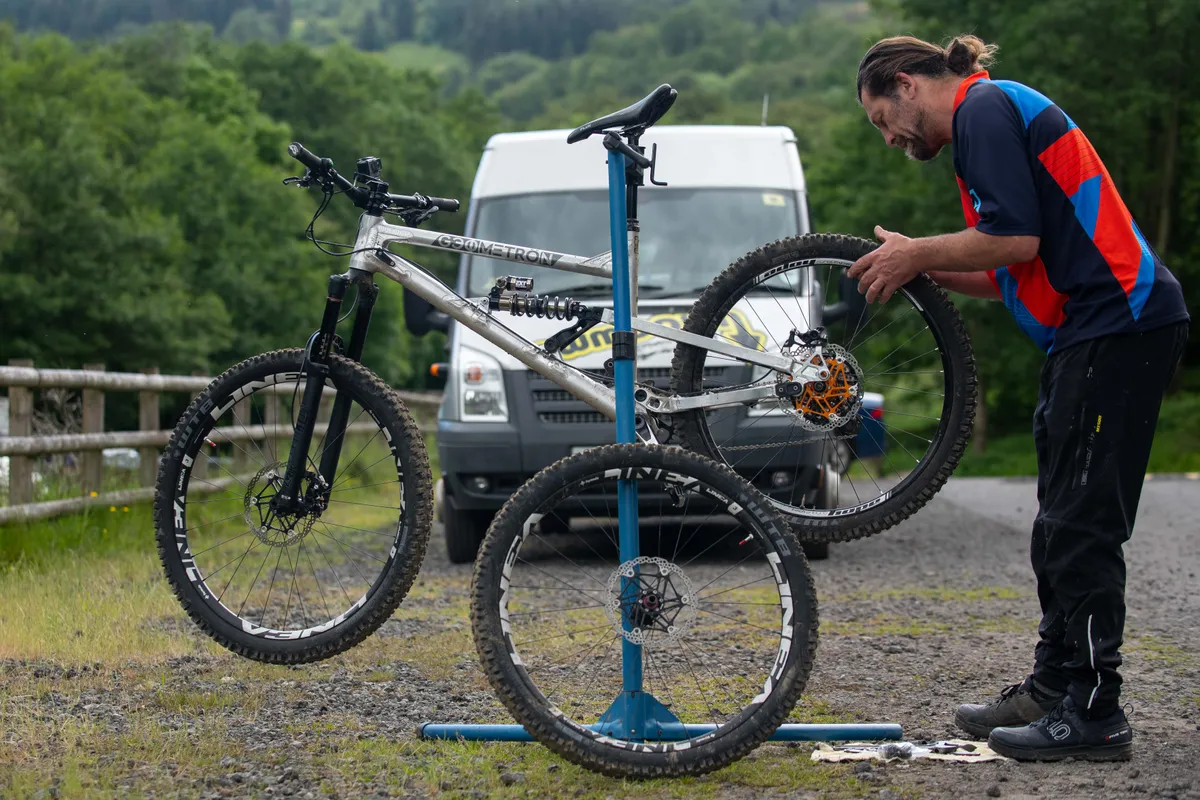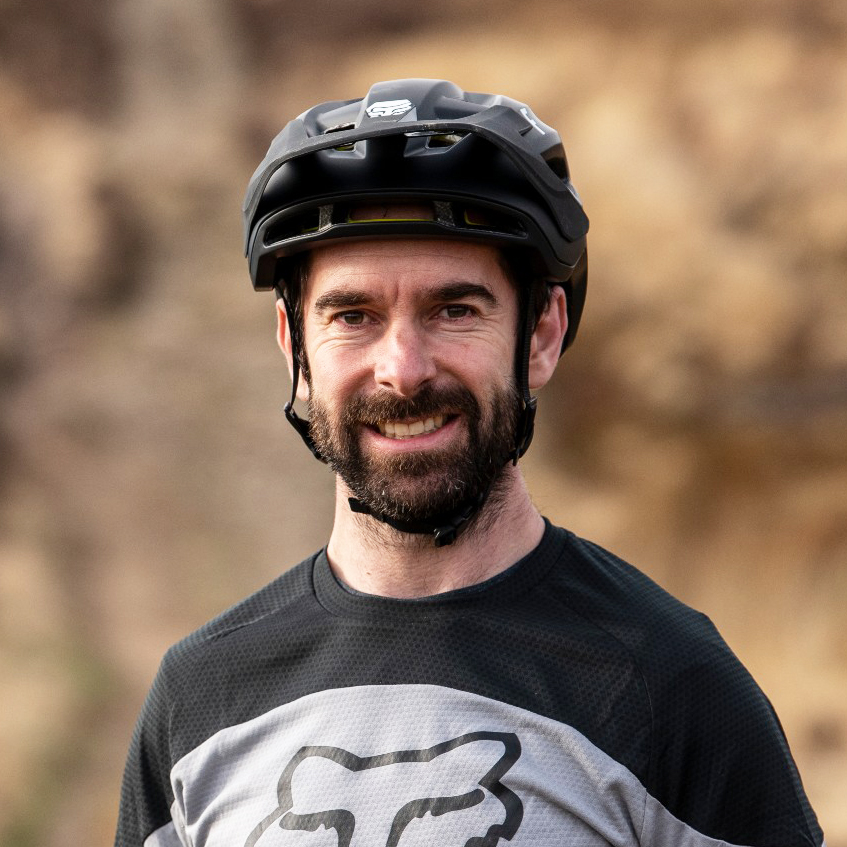I’ll admit I was a little sceptical when the first pedal-kickback taming components arrived on the market.
I was fully aware of the kickback concept and the potential negatives that it brings to suspension performance, but could components such as the Ochain and e*thirteen Sidekick hub really make much of a difference?
The answer, in short, is they can. Calmer handling, more grip and less fatigue are just a few of the benefits components such as this can bring. There are downsides, too, of course.
Here are the five things I learned while testing the e*thirteen Sidekick hubs.
The difference might be bigger than you expect

As many of the test team here at BikeRadar will attest to, when a new product is launched promising all sorts of benefits on the bike, eyebrows are raised and questions are asked – as they should be.
When I got the call about the Sidekick hub, I liked the idea. I’m fascinated by anything that can make a difference to suspension performance.
I always have a close eye on what the World Cup racers, their mechanics and the engineers are doing to up grip, reduce rider fatigue and improve handling. It’s part of what makes the mountain bike puzzle so intriguing.
So, when a brand such as e*thirteen or Ochain says it has created something that’ll not only improve my experience on the bike, but make the bike work a little better, my eyebrows aren’t only raised, they’re levitating two feet above my head.
In testing, as soon as I clattered into the first section of rocky trail, I could feel a difference, and it was more than I expected.
If you want to get an idea of what I was feeling, simply try removing your chain and rolling over some bumps.
There’s less feedback through your feet and the bike overall, and things feel calmer and smoother, almost to the point where you start to begin to question the shock settings – 'am I running too much sag?'.
There’s seemingly more time to think about your lines and body position, and what feels like more traction on offer.
The reality is this hub makes a marked difference to suspension performance. It’s even easier to feel it once you test the Sidekick back-to-back with a regular hub that has a rapid pickup.
And yes, other products with fancy tech make a difference, but I’m not sure I’ve ridden anything recently that had the same effect as this.
Just because it’s good, doesn’t mean it’s for everyone

Certain products might be able to offer exceptional performance, but even so, they won’t suit everyone.
My preference will generally be to make my bike feel as good as it can for riding downhill. I love a good climb, but am willing to suffer a little more for the sake of better tyres, a little extra weight from more powerful brakes or, in this case, improved suspension feel.
As with many things in life, while the improvements in one area are clear, there are trade-offs in others.
Set the Sidekick hub to the largest ‘deadband’ or float setting (18 degrees) and you can really notice the lag when putting the power down through the pedals.
In a lot of instances, this isn’t an issue. But on a technical climb that requires you to pause your pedalling while tackling an obstacle or manoeuvring, it can stifle uphill progress.
Now, in the 12-degree float setting, this isn’t such an issue, but it is still notable.
This doesn’t matter if you’re just winching up the hill, but for those who take as much pleasure from weaving their way up a tricky ascent as they do hammering back down, the Sidekick might be too downhill-focused.
Keep making changes

As humans, we’re very good at adapting and normalising things. What was once new and novel will likely soon be the norm.
Spending time on the same bike with the same parts is a great way to learn its intricacies and behaviours. You know exactly how the suspension will react, and if the tyres will grip on just about any surface or trail going. But it may mean you also take some of its pros and cons for granted.
I was soon very used to how the e*thirteen hub felt. If I was riding my long-term Stumpjumper regularly, I’d soon forget about the impressive bump-smoothing qualities the bike possessed.
I liked how it felt and didn’t want to change a thing.
It was only when I’d jump on another bike, I’d get a quick reminder of how impressive kit such as the Sidekick hub (and the Stumpjumper 15, for that matter) is.
Now, I’m by no means saying adaptation is a bad thing. Far from it. For me, it just meant I’d forgotten how good my bike setup (downhill, at least) was, until I did some back-to-back testing.
On top of that, it also reminded me that playing around with settings, controlling the variables you can control and being consistent when riding laps, highlights the details, and can help you find the settings that work best for you.
It’s hard to remember this sometimes and easy to stick with being comfortable. But if you’re looking to elevate performance in any way, it’s important you’re not afraid of trying new things.
A complicated concept, but an easy-to-use product

Some components appear to add a degree of complexity that only adds time spent fitting and reduces the time you have to ride. I’m always wary of those.
When you consider the problem the Sidekick hub is there to tackle, it seems quite complicated. And when I chatted to the brand about how it was adjusted, I was unsure it’d be as straightforward as they were making out. I mean, is it really ever as simple as brands say?
But the reality of the Sidekick hub is pretty special. It’s packaged neatly and so stealthy that to the untrained eye, you wouldn't clock there was anything different going on.
Add the fact that you can simply fit the rear wheel and reap the benefits – it’s that straightforward.
Obviously, there’s more to it than that, especially if you want to tinker with the settings, but the reality of living with this product and how it works has been smoother than I’d envisaged.
Rolling speed is impressive

With the pawls disengaged while coasting, the Sidekick hub rolls really quickly.
Aside from the close-to-silent freehub whir, I hadn't thought a whole lot about this until I was out on a group ride.
Despite having heavier, stickier tyres than my friends, when riding fire roads or stretches of tarmac, even with my smaller 27.5in rear wheel, the Sidekick hubs seemed to roll along at a fair old lick.
Don’t get me wrong, this is by no means a scientific measure, but it was clear that even though I should have been suffering more due to my love of grippy, protective tyres, I felt I could coast along with my friends on faster-rolling 29in-wheeled cross-country bikes.
What does it all mean?

The biggest takeaway here for me is how much of a notable effect pedal kickback has on suspension performance.
For me, adding the Sidekick hub meant more grip and a smoother ride – two things I’d never turn down.
But for those competing, it's far more important.
I’m excited to see how devices such as the Sidekick hub, Ochain and RockStop chainring, as well as the new hub from DT Swiss evolve. Will they start to become a standard part fitted on bikes from the factory? Maybe.
Either way, it’s exciting to see cool products such as these come to life and make a difference out on the trail.




